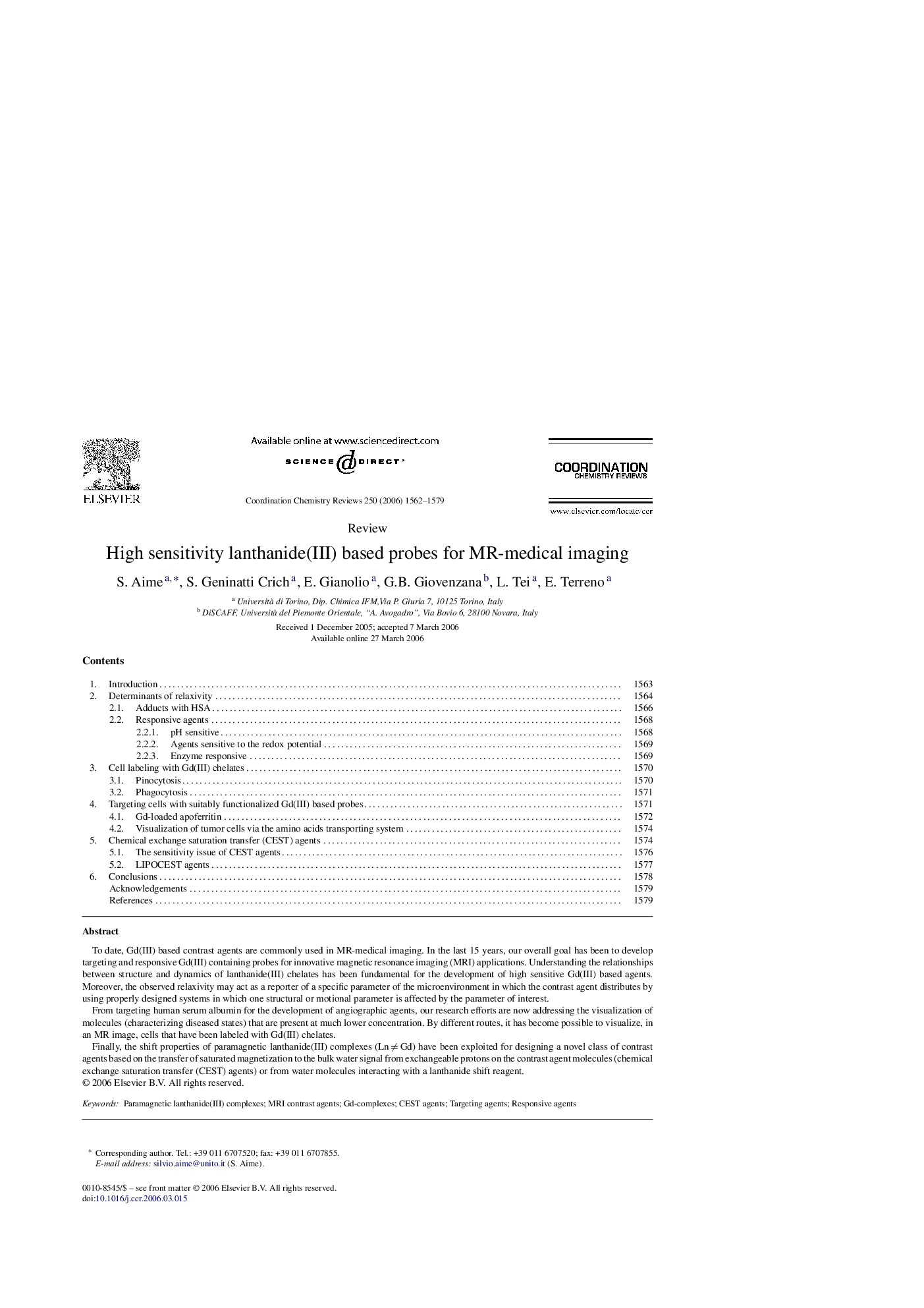| Article ID | Journal | Published Year | Pages | File Type |
|---|---|---|---|---|
| 1300756 | Coordination Chemistry Reviews | 2006 | 18 Pages |
To date, Gd(III) based contrast agents are commonly used in MR-medical imaging. In the last 15 years, our overall goal has been to develop targeting and responsive Gd(III) containing probes for innovative magnetic resonance imaging (MRI) applications. Understanding the relationships between structure and dynamics of lanthanide(III) chelates has been fundamental for the development of high sensitive Gd(III) based agents. Moreover, the observed relaxivity may act as a reporter of a specific parameter of the microenvironment in which the contrast agent distributes by using properly designed systems in which one structural or motional parameter is affected by the parameter of interest.From targeting human serum albumin for the development of angiographic agents, our research efforts are now addressing the visualization of molecules (characterizing diseased states) that are present at much lower concentration. By different routes, it has become possible to visualize, in an MR image, cells that have been labeled with Gd(III) chelates.Finally, the shift properties of paramagnetic lanthanide(III) complexes (Ln ≠ Gd) have been exploited for designing a novel class of contrast agents based on the transfer of saturated magnetization to the bulk water signal from exchangeable protons on the contrast agent molecules (chemical exchange saturation transfer (CEST) agents) or from water molecules interacting with a lanthanide shift reagent.
